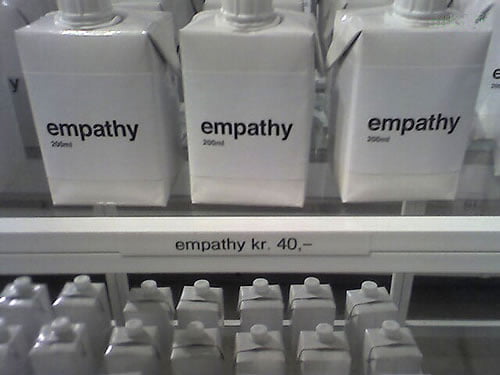
To paraphrase George Bernard Shaw, web developers and their clients are often people separated by a common language. I was recently working on an initial site design with a client who asked me to make it more “grounded”. I was initially at a loss and I bit back my first response of, “what color is grounded?” Instead, I kept asking questions and trying to reflect back the answers to make sure that what I had heard was accurate. We didn’t come up with a design at that meeting (although I did come back with one later that she liked much better) but what emerged was the client’s very strong need to see herself well represented by her web site. This is a perfectly reasonable request, one which any web developer ignores at his peril.
I have been practicing a technique for some time now called Nonviolent Communication, created by Marshall Rosenberg, Ph.D. His belief is that all people’s feeling and actions are driven by their needs, either met or unmet, and that those needs are universal. They include trust, safety, respect, integrity, understanding, being understood, and many more. When we empathize with and express an understanding of the needs of other people, it will often get us past barriers to communication, such as I experienced with the color of “grounded”.
Extending this theory into the online world, when people visit web sites, blogs or social networks, they do so in an attempt to meet needs. The better we are at anticipating those needs, the more likely we are to facilitate meeting them. And if we can do that, we become heroes. At just about any stage in the development process, it’s worth asking the question, “what need are we trying to meet here?” Some needs that might be met at various stages of an online experience could be clarity, comfort, security, fun, trust, contribution, connection, etc. Meeting these needs becomes a high-level goal in the development process and can guide decisions made about implementing specific features. If a feature doesn’t contribute to meeting a need, it’s probably unnecessary.
Focusing on needs can bypass a lot of the imprecision that comes with people describing what they “want”. Clients often come to us with a very detailed description of what they want a particular function to do. In these cases, it’s important to find out what need (or goal, if you like) will be met if this function works in exactly the way they expect it to. What we usually find is that there is some more effective technical means of meeting the need than the one they have described. By cutting straight through to the need, we can streamline the process, allowing each of us to do what we do best; the client focusing on their business strategies and the developers coming up with the means of achieving them based on the technology at hand.
Understanding the needs of the users of a site also requires empathy. First, in assessing which need you are trying to meet and then again in trying to gauge the users’s response to the strategies you have employed. For example, in designing an e-commerce checkout system, there is a need for clarity (the user must know what information is required and what their options are), security (they must feel that financial information is safe) and trust (they must believe that you will deliver the goods that they have purchased). If any of these needs are not met, they are quite likely to feel frustrated, concerned or angry, making it far less likely that they will actually complete a purchase.
Of course, simply identifying needs is not enough to produce a great online experience. There is still the need for planning, design and execution. But striving to meet the needs of everyone involved (including the developers!) must remain in the forefront during the development process and, indeed, throughout the life cycle of the project. They are a touchstone to return to often, when things are working well and especially when they are not.
Empathy photo by Geoff Jones.